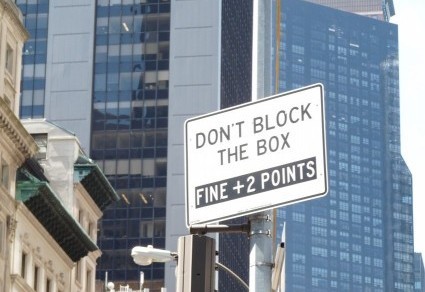I don’t know whether everyone in Dublin has kissed the legendary Blarney Stone (“legendary” as in “imaginary or invented”), thereby picking up facility with language along with whatever microbes the previous kisser left behind. I do know that words seemed, to this tourist, more intriguing in Ireland than in many other spots I’ve visited, such as West 34th Street or Brooklyn Heights. Take this sign:

“Alouders” isn’t in the dictionary, but who cares? It’s easy to recognize “alouder” as “reciter.” Easy for everyone and everything except for autocorrect, that is, which keeps trying to change “alouder” to “alder.” I may never see “a poem as lovely as a tree,” to quote Joyce Kilmer, but I’d hate to trade the spoken word for a forest.
Then there’s this sign, cemented into an outer wall of the Museum of Decorative Arts, which is located in a former military installation called the Collins Barracks:

I have two theories about this sign. It may mark the location of a last-ditch line of defense. I mean, what else are you supposed to use if you run out of bullets and your saber’s edge is dull? Or it may be an art project, a cryptic reference to what can break bones. (I couldn’t find a similar panel labeled “Words That Can Never Hurt Me.”)
Perhaps my favorite Dublin sign is this one:

The school building has undoubtedly been modified since its founding more than four centuries ago. But St. Patrick’s Grammar School is still there, and still in session! Across the street in the Marsh Library (established in the 16th century also), a grammar book used by some of St. Patrick’s original students is on display.
That’s not blarney. That’s education.










 I pass this store often, so I can report with confidence that every forklift has a “literature packet” strapped to its vertical shaft. I’ve spent a lot of time speculating about the contents of the “literature packet,” wondering what genres are represented and whether the literature changes with the seasons. This being autumn, I’d choose Frost’s “After Apple-Picking” or “This Is Just to Say” by William Carlos Williams, possibly the best poem ever written about food larceny. (It’s the one where the speaker confesses that he has “eaten the plums” that someone was “probably saving for breakfast.”) Or maybe the packet contains the script of “Babette’s Feast” or the Christmas dinner scene from Great Expectations. Yes, I know, the “literature” is probably operating instructions, but a grammarian can dream, can’t she?
I pass this store often, so I can report with confidence that every forklift has a “literature packet” strapped to its vertical shaft. I’ve spent a lot of time speculating about the contents of the “literature packet,” wondering what genres are represented and whether the literature changes with the seasons. This being autumn, I’d choose Frost’s “After Apple-Picking” or “This Is Just to Say” by William Carlos Williams, possibly the best poem ever written about food larceny. (It’s the one where the speaker confesses that he has “eaten the plums” that someone was “probably saving for breakfast.”) Or maybe the packet contains the script of “Babette’s Feast” or the Christmas dinner scene from Great Expectations. Yes, I know, the “literature” is probably operating instructions, but a grammarian can dream, can’t she? According to the dictionary, a “drove” is “a herd or flock” or “a large mass of people acting in unison.” Therefore, “Zimbabweans” can turn out in “droves,” but not “Zimbabwe.” Unless a mass of countries with that name somehow didn’t make it onto the map?
According to the dictionary, a “drove” is “a herd or flock” or “a large mass of people acting in unison.” Therefore, “Zimbabweans” can turn out in “droves,” but not “Zimbabwe.” Unless a mass of countries with that name somehow didn’t make it onto the map?
 As far as I’m concerned, BOGO all you want. I once thought that the concept of “buy one get one” was an unnecessary statement of the standard deal between buyer and seller. But now I see that most BOGO-users are too busy surfing social media to add an “F,” for “free.” Or maybe they think that BOGOF sounds like a mediocre brand of caviar. I commend this sign-writer for specifying the terms of the deal, spelling out “buy one get one” for “50% Off,” though strictly speaking the sign should read “BOGAOF50%O” (buy one get another one for 50% off). I concede that such a sign resembles the kind of password people concoct and promptly forget. I will, however, raise an objection to “tight.” I prefer to cover both legs with “tights,” not just one with a “FREE tight.” And $75 is a little steep, don’t you think?
As far as I’m concerned, BOGO all you want. I once thought that the concept of “buy one get one” was an unnecessary statement of the standard deal between buyer and seller. But now I see that most BOGO-users are too busy surfing social media to add an “F,” for “free.” Or maybe they think that BOGOF sounds like a mediocre brand of caviar. I commend this sign-writer for specifying the terms of the deal, spelling out “buy one get one” for “50% Off,” though strictly speaking the sign should read “BOGAOF50%O” (buy one get another one for 50% off). I concede that such a sign resembles the kind of password people concoct and promptly forget. I will, however, raise an objection to “tight.” I prefer to cover both legs with “tights,” not just one with a “FREE tight.” And $75 is a little steep, don’t you think?












